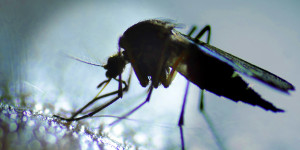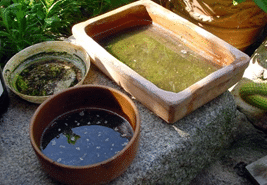Your Guide to Home Mosquito
a comprehensive mosquito control guide all about mosquitoes; what they are, how they feed, why they bite and most importantly, how to get rid of them.
Mosquito Anatomy
Mosquitoes are relatively small insects, measuring an average of just more than 6 mm long and weighing about 2.5 milligrams. They’re divided into three basic parts: the head, thorax and abdomen.
Head
The head is crammed with sensory equipment that help the mosquitoes find and feed on people and animals.
Compound eyes
They have two large compound eyes covered with tiny lenses called ommatidia that are capable of detecting even slight movement. On the top of their heads, they also have ocelli, simple photosensitive eyes detect variations in light.
Antennae
Their antennae, long feathery organs, jut forward from their heads and contain sensitive receptors that detect carbon dioxide in human breath from distances of more than 100 feet. The maxillary palp between the antennae pick up the odor of ocentol and other chemicals released in human sweat.
Proboscis
Right in the middle, also between the antennae, is the proboscis, a long serrated mouthpart used to pierce the skin and suck out blood. The proboscis holds two tubes, one that injects saliva containing an anti-coagulant and mild painkiller, and a second that actually draws the blood.
Thorax
The thorax, or what you might think of as the torso, is connected to the head. A pair of wings and a pair of halteres, small wing-like organs used for steering, sprout from the thorax. The legs also come out of the thorax, six in all, with tiny claws at the end of each to help the mosquitoes stay attached to surfaces.
Abdomen
The abdomen hangs from the thorax and serves as the mosquitoes’ stomach and lungs.
Spiracles
Small openings called spiracles line both sides of the abdomen, allowing the mosquitoes to draw in air. The abdomen holds the blood that female mosquitoes take in, and a nerve in the abdomen signals when it is full. A female’s eggs are also stored in the abdomen.

Mosquito Life Cycle
Eggs
Female mosquitoes lay eggs about every third day during their lifespan, usually in clumps of 100 to 300 eggs. The eggs are deposited either as “rafts” floating on the surface of standing water or on the ground in areas that regularly flood. Mosquitoes can lay eggs in as little as one inch of water. The eggs, generally white when laid, cannot hatch unless they are in water, usually for two to three days.
Larvae
When the eggs hatch, the larvae emerge. They are called “wigglers” because that’s how they swim. Most of the time, they hang from the surface of the water, breathing through tubes. The wigglers feed on organic matter in the water, shed their skins four times over about a week, and develop into pupae. Larvae are the easiest to kill, using oils that block their breathing or bacteria that poison them.
Pupae
The pupae are called “tumblers” for the way the fall into the deepest part of the water when threatened by predators. They are shaped like commas, partially encased in cocoons, with the head at one end and tiny flippers at the other. The pupae do not feed while developing, but breathe through tubes like the larvae. It takes about four days for the the adult mosquito to emerge.
Adults
The newly emerged adults climb out of the water to rest and wait for their bodies to dry out. The males will take a day or two to fully develop their reproductive organs, then seek out a female, by the sound of her wingbeats, for mating. They’ll live about three to five days after that, feeding on fruit and plant nectar. The females mate once, but continue laying eggs after every blood meal. Under the best conditions, they can live up to a month or two.

How to Get Rid of Mosquitoes in Your Backyard: A Step-By-Step Guide
From the inside of your house, it looks like a beautiful night. The stars are out, the lightning bugs are dancing, and you want nothing more than to go outside to enjoy it. But when you do, what happens? You’re met with a swarm of mosquitos. Backyard mosquitoes can prevent you from enjoying outside time. So what can you do to stop them from being a problem? Keep reading for a guide on how to get rid of mosquitoes.
Before learning about how to get rid of them, you should understand some facts about mosquitoes. Although all mosquitoes seem similar and awful, there are around 3,000 different types. In the US, there are around 200 species.
Many people believe that mosquitoes are parasites that suck blood for food. However, the reason they suck blood is to ensure that their bodies have enough nourishment to lay eggs. Mosquitoes lay a large number of eggs at once. In some instances, they can lay over 100. This means that it’s easy for mosquito populations to get out of hand if you don’t control them.
Consider Where They’re Coming From
When you’re looking into cutting down on mosquito populations, consider where they can be coming from. Understand that mosquitoes need standing water to breed. If you have open containers of water at your home, look into repairing leaks or removing them. You can also dump the containers, which will kill the mosquito larvae before they can mature.
Repel Them
If you don’t want to use harsh chemicals and treatments, you can look into more natural ways to keep mosquitoes away. If you’re outside for an evening, there are some other repellents you can use. Burning certain kinds of candles, such as citronella, will help keep them away. You can also use essential oils with lavender, eucalyptus, or lemon. Mosquitoes don’t like these smells and will steer clear of where they originate from.

Home Mosquito Control
Mosquitoes can breed in as little as one inch of standing water, which means there are numerous places around a home that might support them. It is important to get rid of those possible breeding sites to avoid a yard full of biting insects.
Remove empty containers
Start by cleaning up any containers left lying around the yard. Put away buckets, pick up toys, and dump any pet dishes kept outside. If the dog must have a dish in the backyard, made sure the water is changed daily. Other containers might need to stay outside, as well. Punch holes in them so water drains.
Cut the grass and trim the bushes
During the day, mosquitoes like to rest in tall grass or among shrubs in a moist, shady spot. Keeping the grass short deprives them of a resting place. Also, rake up any fallen leaves. An overturned leaf can hold enough water for a mosquito’s eggs, and also give them a place to wait out the day.
Check the rain gutters
They will often become plugged by leaves, blown branches, or other debris, and water will accumulate instead of draining out. Clean them out regularly, especially during the summer. If water is left standing in the gutters more than a week, mosquitoes will lay eggs in them.
Fill in any low-lying areas in the yard
These depressions can hold water after a rain or when the lawn is watered. Without proper drainage, the water will stay for days, allowing mosquitoes a chance to breed. Add dirt and sod, or install a drainage system.
Look after your pool
Keep the water in the pool clean and chlorinated. Drain and cover it when it’s not in use, and the same goes for wading or collapsible pools. Make sure any decorative items, such as birdbaths or ponds, get fresh water at least once a week. Stock the pond with fish that will eat mosquito larvae.
How To Get Rid Of Mosquitoes Naturally
Remove Stagnant water sources
Mosquitoes lay eggs in water, hence its important to change the water in flower pots, pet dishes, bird baths etc on regular basis. Make sure potted plants (indoors/outdoors) never have standing water in trays. Most mosquitoes eggs hatch within 48 hours and it takes only 8-10 days for eggs to turn into adults. It doesn’t take too long.
Throw out all the junk from your yard
If your yard has any items you don’t need, chuck them out. Old tires or any other yard debris hiding at some corner in your yard can retain moisture and provide a breeding area to mosquitoes.
Cleaner surroundings
Keep your gutters cleaned out, fill in unnecessary ditches, mow the lawn, basically tidy surrounding, giving no place for mosquitoes to breed.
Use of anti mosquito herbs
Citronella is the most common ingredient in most mosquito repellents. It’s a beautiful perennial grass that emits a strong aroma which masks other scents keeping mosquitoes away from things located around this plant.
Placing garlic and lavender plants around the home is considered a useful deterrent for mosquitoes.
Lemon balm, basil, Marigold, catnip, rosemary & peppermint are some plants which can make your house smell wonderful as well as keep mosquitoes away.
Use of Oils
Tea light candles made with citronella oil are popular for this purpose. Lavender oil can also be applied to outdoor seating areas or windowsills.
Coconut oil combined with neem oil repels mosquitoes from humans upto 12 hours. It is also an excellent moisturizer for the kin.
Peppermint oil & lemon eucalyptus oil are also useful anti mosquito solutions when applied to the skin.

Recent Comments